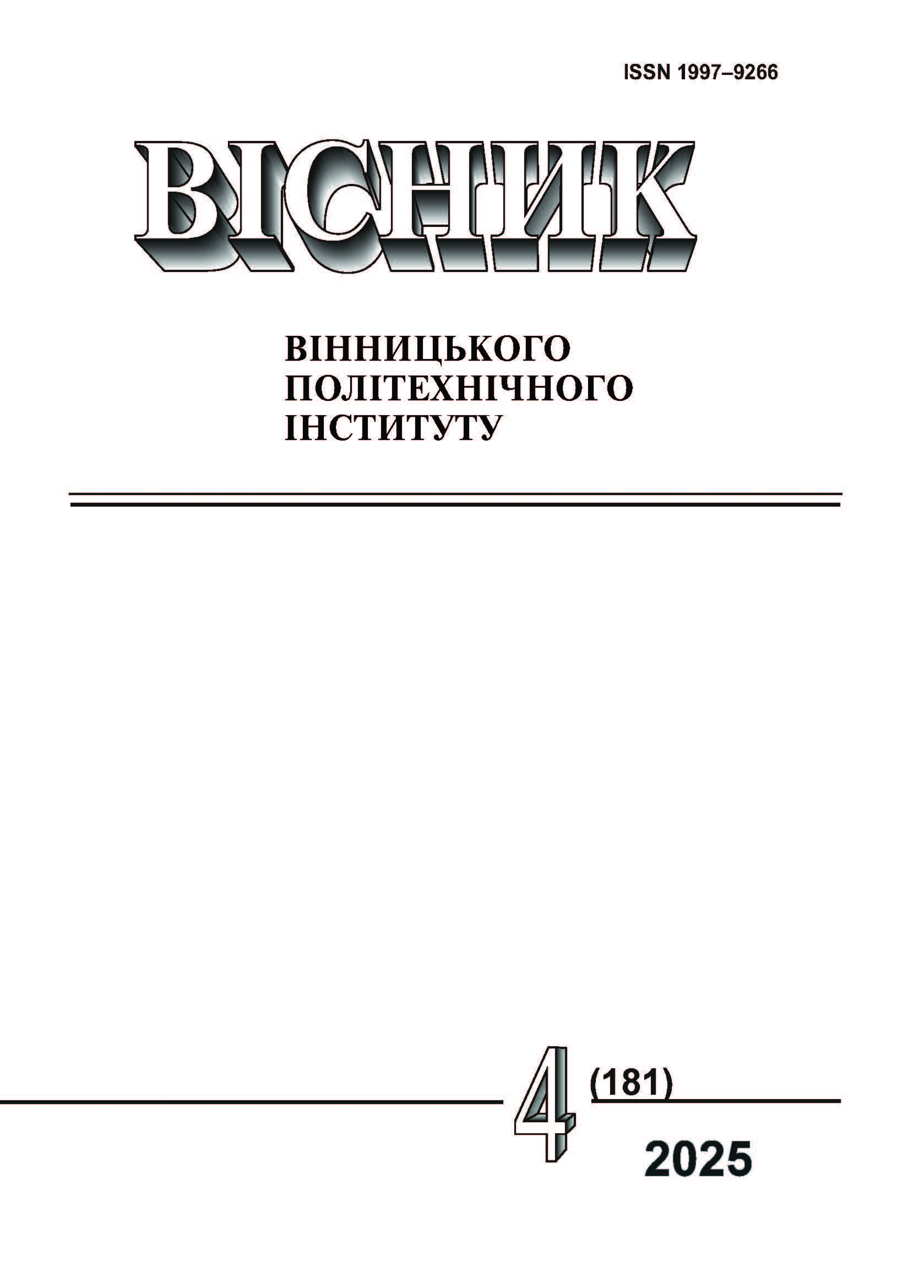ОПТИЧНИЙ БЕЗПІЛОТНИЙ ЗАСІБ ДЛЯ ЕКОЛОГІЧНОГО МОНІТОРИНГУ ЯКОСТІ ПОВІТРЯ У МІСЬКОМУ СЕРЕДОВИЩІ
DOI:
https://doi.org/10.31649/1997-9266-2025-181-4-195-200Ключові слова:
оптичний сенсор, інфрачервоне випромінювання, CO₂, CO, CH₄, SO₂, NO₂, абсорбційна спектроскопія, моніторинг повітря, HITRAN, Бугер–Ламберт–Бер, екологічний контрольАнотація
Висвітлено результати комплексного дослідження, спрямованого на розробку інноваційного оптичного безпілотного засобу, який забезпечує оперативний контроль якості атмосферного повітря в реальних умовах урбанізованого середовища. Основний акцент поставлено на застосуванні інфрачервоного оптико-абсорбційного методу, який дозволяє селективно й чутливо виявляти концентрації ключових газів-забруднювачів — вуглекислого газу (CO₂), чадного газу (CO), метану (CH₄), сірчистого ангідриду (SO₂) та діоксиду азоту (NO₂).
У дослідженні детально проаналізовано джерела, концентраційні межі та екологічні наслідки присутності цих газів у міському повітрі. Обґрунтовано вибір оптимальних смуг поглинання для кожного з газів на основі спектроскопічних даних з бази HITRAN, що дало змогу підвищити точність і селективність вимірювань. Запропоновано та реалізовано структурну схему сенсорного модуля, що включає джерело ІЧ-випромінювання, фотоприймач, оптичну систему та стабілізовану антивібраційну платформу, адаптовану для встановлення на БПЛА типу квадрокоптер.
Математична модель функціонування сенсора базується на законі Бугера–Ламберта–Бера та враховує вплив температури, тиску, висоти над рівнем моря, довжини оптичного шляху та параметрів поглинання. Особливу увагу приділено залежності вихідної напруги фотодіода від концентрації досліджуваного газу, що дозволяє здійснювати точну кількісну оцінку.
Результати експериментів, проведених у місті Вінниці, підтвердили стабільну роботу пристрою за різних атмосферних умов та достовірність вимірюваних значень CO₂. Отримані концентрації перебувають у межах, характерних для міського повітря, що свідчить про релевантність та практичну цінність розробленого засобу.
У підсумку доведено ефективність використання мобільного оптичного сенсора на базі БПЛА для екологічного моніторингу в умовах міста. Окреслено перспективи вдосконалення системи шляхом реалізації мультигазового аналізу, впровадження бездротової передачі даних та інтеграції у смарт-системи управління міським середовищем.
Посилання
В. Р. Козубовський, «Оптичні прилади газового аналізу для контролю забруднення атмосферного повітря,» Метрологія та прилади, № 2, с. 62-70, 2010.
O. Vasilevskyi, I. Dudatiev, and K. Ovchynnykov, “Tool control the concentration of carbon dioxide in the flue gas boilers based on the optical absorption method,” Informatyka, Automatyka, Pomiary w Gospodarce i Ochronie Środowiska, vol. 9, pp. 30-34, 2019. https://doi.org/10.35784/iapgos.232 .
В. Г. Петрук, Спектрофотометрія світлорозсіювальних середовищ. УНІВЕРСУМ-Вінниця: ВНТУ, 2000, 207 с.
І. А Дудатьєв, С. В. Мальцев, і М. О. Притула, «Дослідження коефіцієнта поглинання СО2 у агресивних газових середовищах,» Herald of Khmelnytskyi National University. Technical Sciences, № 351 (3.1), с. 157-162, 2025. https://doi.org/10.31891/2307-5732-2025-351-19 .
V. Podzharenko, and P. Kulakov, “Photoelectric angle converter,” Proceedings of the SPIE, vol. 4425, pp. 42-459, 2001.
##submission.downloads##
-
pdf
Завантажень: 12
Опубліковано
Як цитувати
Номер
Розділ
Ліцензія

Ця робота ліцензується відповідно до Creative Commons Attribution 4.0 International License.
Автори, які публікуються у цьому журналі, згодні з такими умовами:
- Автори зберігають авторське право і надають журналу право першої публікації.
- Автори можуть укладати окремі, додаткові договірні угоди з неексклюзивного поширення опублікованої журналом версії статті (наприклад, розмістити її в інститутському репозиторії або опублікувати її в книзі), з визнанням її первісної публікації в цьому журналі.
- Авторам дозволяється і рекомендується розміщувати їхню роботу в Інтернеті (наприклад, в інституційних сховищах або на їхньому сайті) до і під час процесу подачі, оскільки це сприяє продуктивним обмінам, а також швидшому і ширшому цитуванню опублікованих робіт (див. вплив відкритого доступу).





